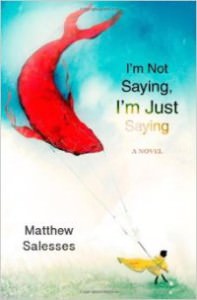The trouble with traditionally structured novels is they no longer seem to fit easily into the fast-paced, electronically charged lives of would-be readers, let alone the lives of committed novel readers. Don’t worry, I’m not about to write that the novel is dying. It’s not. I’ve spent hundreds of hours of my life submerged in 600-page novels. Maybe even thousands. But I’d be lying if I didn’t admit that I no longer always have the time or the motivation to dedicate a weekend of my life to a long, dense read. And I’m also well aware of the parallel that exists between my shrinking attention span and the amount of time I spend in a Netflix vortex. Enter, novel in flash.
Now, the “novel in flash,” or a novel comprised of many related flash fiction chapters or interrelated pieces, is steadily whittling a notch on literary fiction’s bedpost. Aside from its often excellently crafted narratives, the novel in flash offers a solution to readers who want both the long-haul satisfaction that a novel promises and the breathless storytelling that short chapters consumed piecemeal insist upon—brief, delectable, bite-sized reads that can be wholly enjoyed on a short train ride across town, in the checkout line at the grocery story, or between dinner and dessert. Read six or seven flash chapters in a row, if you have time. You’ll make headway in the larger narrative and still feel moved by what you’ve read because the rule of brief fiction reigns in this form: every word must count.
Some novels in flash can be read piecemeal, but they’re also often so tightly constructed, you’ll stay up way past your bedtime to plow through pages until you hit the last one. Given that short-short pieces are meant to burn with every word, it’ll be worth it.
 To get you started, here’s a guide to what’s good in flash novel land. Below are four praiseworthy novels in flash, each unique in form and story, in no particular order.
To get you started, here’s a guide to what’s good in flash novel land. Below are four praiseworthy novels in flash, each unique in form and story, in no particular order.
I’m Not Saying I’m Just Saying by Matthew Salesses (Civil Coping Mechanisms)
Deceptively simple on the outside, utterly complicated on the inside, Salesses’s I’m Not Saying I’m Just Saying masterfully wields the short-short form. His startling sentences reveal the intimacies and intricacies of one man’s shaky relationships.
 Lotería by Mario Alberto Zambrano (Harper)
Lotería by Mario Alberto Zambrano (Harper)
Mexican Lotería cards, selected by the hand of Luz—a girl in the midst of tragedy, form the structure that propels this stunning story of joy and suffering forward. Each card conjures a memory, and with each short passage Zambrano widens the narrative lens with his outstanding prose.
 One Hundred Apocalypses and Other Apocalypses by Lucy Corin (McSweeny’s)
One Hundred Apocalypses and Other Apocalypses by Lucy Corin (McSweeny’s)
With stories that range from just a few sentences in length to ones that approach the upper limits of flash, this book shines a light on a hundred different possible human apocalypses. Corin looks obliquely at the present and you almost have to believe that what she writes could be true. This book is no small feat.
 Can’t and Won’t by Lydia Davis (Farrar, Straus and Giroux)
Can’t and Won’t by Lydia Davis (Farrar, Straus and Giroux)
Not a true novel, but a collection featuring an abundance of flash pieces written by one of the contemporary masters of the craft. Can a single line hold a whole story? You be the judge.




